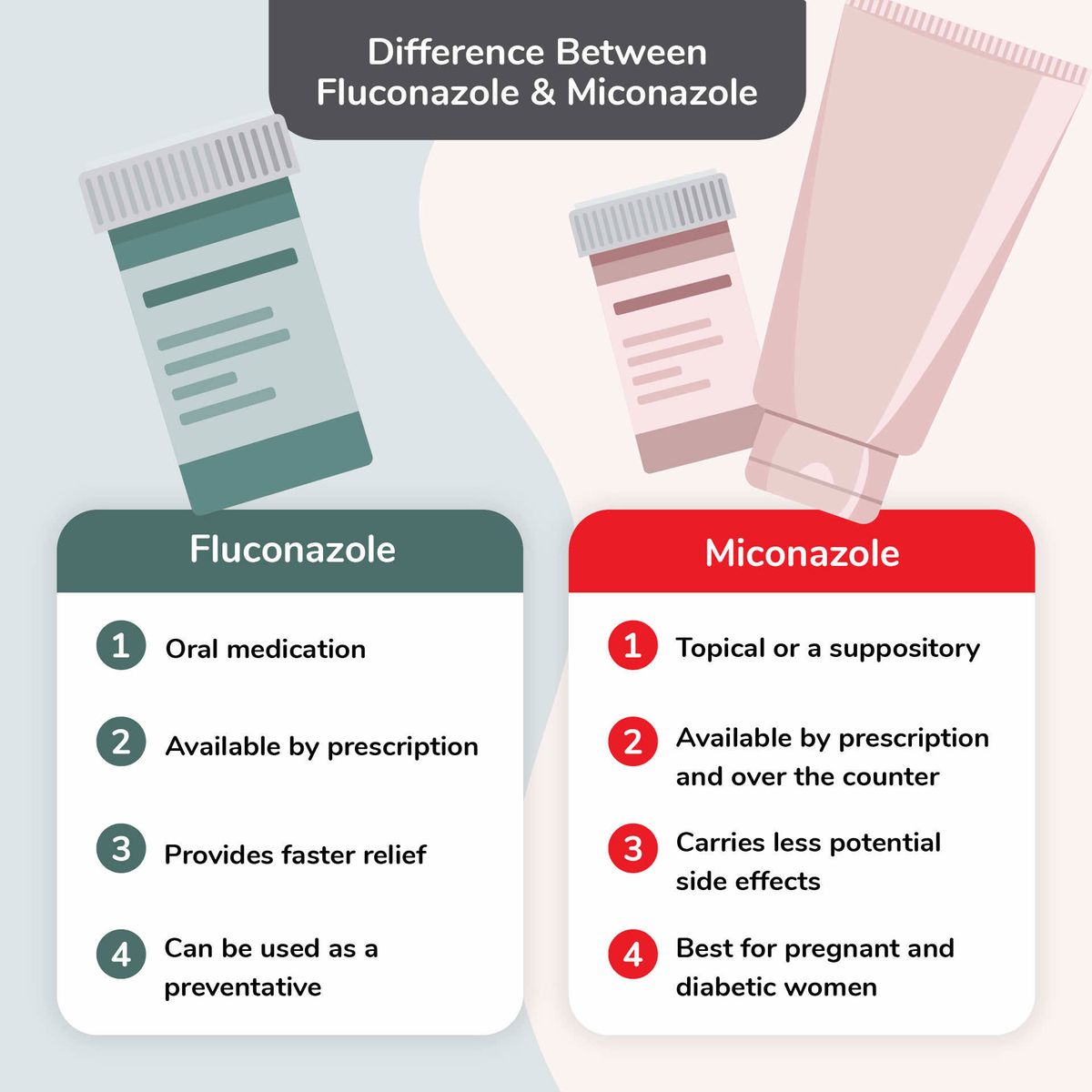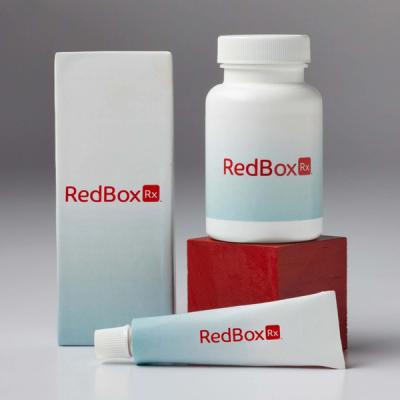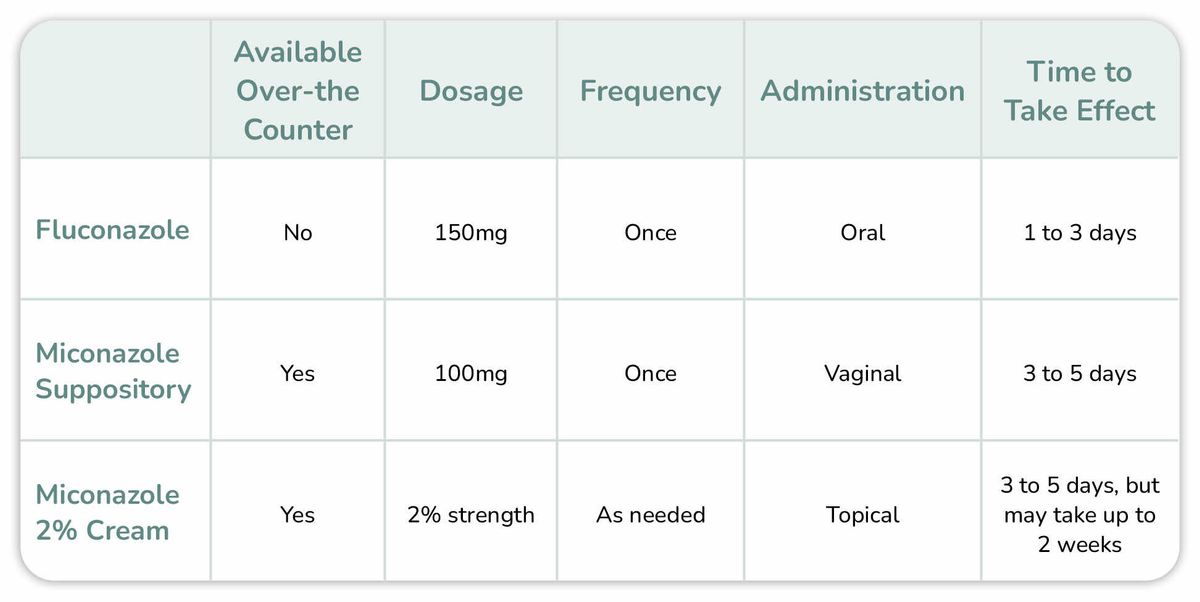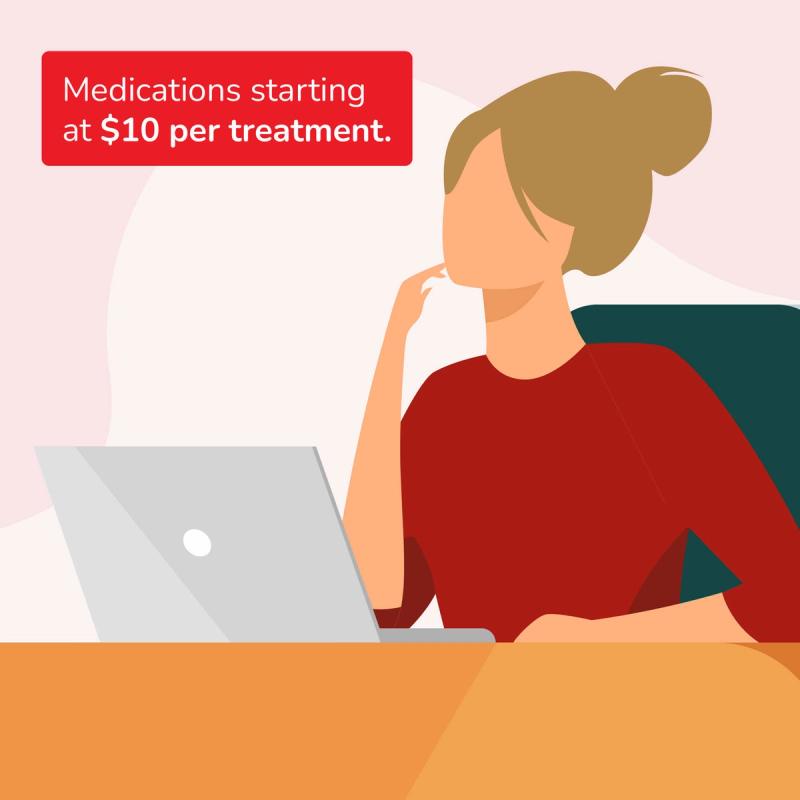Yeast infections can be uncomfortable and inconvenient, but effective treatments are available. Two commonly prescribed antifungal medications for yeast infections are oral fluconazole (Diflucan®) and miconazole (Monistat®) in suppository or cream. Both have been proven effective but vary in their administration, dosing, side effects and availability.
Read on to learn about fluconazole (Diflucan®) and miconazole (Monistat®) for treating yeast infections and see how RedBox Rx can help you determine the best option for you.
Key Takeaways
Fluconazole (Diflucan®) is a single-dose oral prescription. Miconazole (Monistat®) comes as an OTC, prescription topical cream or suppository applied for one to seven days.
Oral fluconazole treats the whole body, making it useful for moderate, severe or recurrent yeast infections, but it can cause headache, nausea and drug‑interaction concerns.
Miconazole acts locally, giving fast symptom relief with few mild side effects, like mild burning or itching, at the application site.
What is fluconazole (Diflucan®)?
Fluconazole, the generic version of Diflucan®, belongs to a class of medications called triazoles and is one of the most widely prescribed anti-fungal medications. It is an FDA-approved oral tablet to treat yeast infections, UTIs, and other fungal or yeast-related conditions.1 It works by killing and slowing the spread of fungus and yeast in the body.2
The dosing and duration of fluconazole depends on the specific infection or condition. Sometimes you may only need to take one dose, or you may need to take fluconazole for several weeks.3 RedBox Rx typically provides fluconazole in 150mg tablets for a three-day treatment.
Common side effects of fluconazole include:4
Headache
Dizziness
Diarrhea
Stomach pain
Heartburn
Change in ability to taste food
What is miconazole (Monistat®)?
Miconazole, a generic version of Monistat®, belongs to a class of anti-fungal medications called imidazoles. It works by stopping the spread of fungus that can cause infections.5 Generally, miconazole treatments are administered one dose a day and can range anywhere from one day to several weeks.6 RedBox Rx provides two dosing options for yeast infections: a 100mg vaginal suppository or 45g tube of 2% topical cream.
A suppository is a great option for users who want a one-time dose that won’t interfere with activities like work or exercise.7 Lower-dose topical cream is the recommended treatment for yeast infections in pregnant women and women with diabetes.8
Common side effects of miconazole include:9
Burning or irritation at the application site
Rash

What’s the difference between fluconazole and miconazole?
Fluconazole and miconazole are both commonly prescribed antifungal treatments, yet they do have some differences. The biggest difference is that fluconazole is an oral medication and miconazole is topical or a suppository. Also, fluconazole is only available by prescription while miconazole is available both as a prescription and over the counter. Between the two, fluconazole carries more drug interactions and potential side effects than miconazole.10 Fluconazole generally provides faster relief than miconazole.
For general, uncomplicated treatment of yeast infections either fluconazole or miconazole is effective for 80-90% of users that complete treatment. However, some outside factors could determine which treatment is best in that specific case. For example, topical miconazole can weaken latex condoms so either sex should be avoided during treatment or oral treatment may be prescribed. Pregnant and diabetic women should only seek lower-dose topical treatment for yeast infections. Lastly, fluconazole oral treatment can be used as a preventative for reoccurring or chronic yeast infections.11
Can fluconazole and miconazole be used to together to treat yeast infections?
It is important to consult your medical professional before using fluconazole and miconazole together. Fluconazole can increase the effects of miconazole and it is generally recommended only to take one anti-fungal treatment at a time.12

Yeast Infection Treatment Online
Skip the doctor's office wait. RedBox Rx offers convenient online doctor consultations for only $39 and prescription medications starting at $10 per treatment.
Get StartedHow effective are fluconazole and miconazole for yeast infections?
Both fluconazole and miconazole have a history of high effectiveness in treating yeast infections. In one study, 76% of participants had zero signs of a yeast infection six days after just one 150mg dose of fluconazole.13
In a different study, a single dose of miconazole vaginal suppository combined with miconazole 2% cream (as needed) provided nearly 72% of participants with a full recovery within three days.14
Are fluconazole and miconazole available over the counter?
Fluconazole is available by prescription only. Miconazole is available both by prescription and over the counter.
Fluconazole (Diflucan®) vs. Miconazole (Monistat®) Comparison Chart

How RedBox Rx can help

RedBox Rx makes receiving a prescription for yeast infections easy.
Benefits of RedBox Rx include:
Transparent, affordable, flat rates for medications starting at $10 per treatment.
Flat-rate $39 consultation with a U.S. licensed medical professional.
No insurance required. FSA and HSA eligible.
No office wait times or scheduling issues typical with physical medical practices.
FREE shipping directly to you.
Get started now with an online assessment for a yeast infection.


